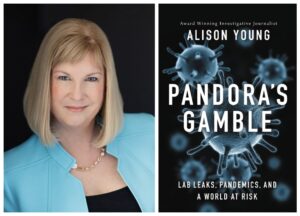
The COVID-19 pandemic spurred unprecedented public and private investment in vaccine research and proved that multiple vaccines could be developed, approved, and manufactured for billions of people within a year if there is funding and political will for it to be done.
But could it be done again and for what diseases? Where should research be directed to respond to the next pandemic? What are the lessons learned from the rapid development of COVID-19 vaccines? What do we know now about our immune systems that we didn’t know before?
Jeffery Taubenberger, M.D., Ph.D., chief of the viral pathogenesis and evolution section at the National Institute of Health’s National Institute of Allergy and Infectious Diseases, is one of many scientists thinking about these questions and avenues of research. Taubenberger, who was part of an NIH team that was the first to sequence the 1918 pandemic influenza virus genome, published a January 2023 paper in the journal Cell Host & Microbe urging more research for next generation respiratory vaccines be directed toward administering them via the nose and mouth, rather than by syringe.
“The pandemic [and the COVID-19 vaccines that were developed] showed us something we’ve known [for decades] about respiratory viruses and vaccines,” said Taubenberger during a recent interview with me. “It is very challenging to develop really broadly protective and durable vaccines.”
The pandemic enabled scientists to prove that mRNA technology works as a way to develop and manufacture vaccines quickly and that it can be retooled to update shots to target new variants of SARS-CoV-2, the virus that causes COVID-19. Decades of research on mRNA technology prior to the pandemic demonstrated the promise of the approach, but there had never been enough funding to enable the establishment of a clinical trial with humans to prove that it worked.
“We now have a couple years of experience with wide use of mRNA-based vaccines and now we have data that we didn’t have before,” he said. “We know that you can really stimulate good antibody responses and [also] that it doesn’t provide the kind of durable and breadth of immunity that we hoped.”
And that information can be built upon to develop better vaccines. Because of the way the body’s immune system responds to respiratory viruses inhaled through the nose, like COVID-19, nasal spray vaccine might offer better and longer-term protection, he said.
To understand why a nasal vaccine might work better than an injected version, the Atlantic’s Katherine Wu explains that injected vaccines aren’t as good at inducing the immune system to create a certain type of antibody that can stand guard in the mucus layer of the nose and mouth. So respiratory viruses can slip through, undetected, and begin replicating in the nose for several days before the body’s immune system is fully mobilized to expel it.
But a nasal spray vaccine might solve that problem. For example, Taubenberger imagined a vaccine spray that could be easily purchased at the pharmacy for people to squirt into the nose in the fall and late winter to prevent colds, the flu and COVID-19.
A nasal vaccine is “sort of akin to having guards placed outside the door in the mucus layer, versus waiting for the invaders to come in,” Akiko Iwasaki, Ph.D., a Yale University immunobiology professor, told NBC News. Iwasaki is working on an intranasal coronavirus vaccine.
Taubenberger hopes future vaccines focus not just on preventing COVID-19 but also seasonal respiratory viruses known to cause serious illness before the pandemic, including influenza and respiratory syncytial virus (RSV).
“The pandemic should push us in the directions of thinking more wholistically … how do we make better respiratory vaccines,” Taubenberger said.
Journalists interested in reaching out to Taubenberger for stories about the future of vaccine research should contact Anne A. Oplinger at (301) 402-1663. And join us in St. Louis for AHCJ’s annual conference, where I’ll be leading a March 10 panel on the pandemic’s impact on vaccine development.
See also the U.S. Department of Health and Human Services federal vaccines implementation plan 2021-2025 and the University of Minnesota Center for Infectious Disease Research and Policy Coronavirus Vaccines R&D Roadmap for more background on this topic.








